Frequently Asked Questions
This is where you will find answers.
If your question is not answered, don’t hesitate to contact us.
Frequently Asked Questions
PFAS (polyfluoroalkyl substances) are synthetic chemical compounds that have multiple fluorine atoms attached to an alkyl chain. A subgroup, the fluorinated surfactants, are highly effective at reducing the surface tension of water, versus comparable hydrocarbon-based surfactants.
Because of the above-described “useful” properties, PFAS was (and still is in many cases) widely used in manufacturing of many products, including human consumption products such as non-stick cookware, disposable plates, cups, bowls, eating utensils, food packaging, and other products that benefit from the non-stick / easy slip properties of PFAS such as various forms of paper and packaging, ski wax, stain and water resistant coatings for such things as carpeting and clothing, polishes, waxes, certain paints, pesticides, and herbicides. Some of the predominant manufacturers of PFAS and its many variants are 3M, Typco Fire Products, National Foam, Buckeye Fire Protection, Chemguard, Du Pont De Nemours, and The Chemours Company. PFAS is still in production and use today. Saratoga Biochar is diametrically opposed to the manufacture and broad use of PFAs/PFOAs).
Traces of PFAS, and its many variants, are routinely found in biosolids because the material has passed through human bodies. PFAS is detectable in nearly every human in the industrialized world today because PFAS has been so broadly used in food preparation, packaging, and consumption products for decades. Occasionally, where a PFAS manufacturer or a manufacturer that uses PFAS in the making of products has released PFAS directly to a wastewater treatment facility, the biosolids from such wastewater treatment facilities have much higher levels of detectable PFAS. As demonstrated in Maine, such instances are highly unfortunate and a driving reason behind Saratoga Biochar’s relentless quest to fix the problem.
Risk assessments by states (ME, NH, NY, VT, etc.) have determined that direct contact, inhalation, or ingestion of typical biosolids and other recycled residuals pose no significant health risk, including from the traces of PFAS they contain. Typical levels of PFAS in modern biosolids are ~20 times less than the most stringent direct contact standard for soils, which is 600 ppb for PFOA and 440 ppb for PFOS for industrial site use in NYS. Only in a few worst-case scenarios have wastewater and biosolids been implicated in PFAS water contamination at levels of concern (e.g., near or above 70 ppt in water). These rare cases are where there have been ongoing discharges to sewers or the environment from industrial facilities or fire-fighting foam waste materials manufactured with significant volumes of PFAS. In response to these rare situations, PFAS levels in wastewater and biosolids have been reduced efficiently by investigating industries discharging to the sewer system and stopping their discharges through industrial pretreatment requirements and other source controls.
PFAS and many other harmful contaminants end up in the human food chain when biosolids are directly applied to agricultural lands, used as a dried fertilizer, or used as compost to grow food. This occurs in New York and many other states where the use of “biosolids as fertilizer is permissible. Saratoga Biochar is opposed to this practice and offers the best possible alternative – to remediate contaminants from biosolids through thermal treatment to avoid spreading PFAS and other contaminants.
Saratoga Biochar addresses ALL of the issues presented by biosolids disposal. Saratoga Biochar effectively remediates PFAS and other contaminants commonly found in biosolids. Saratoga Biochar produces a beneficial use product, Carbon Fertilizer™. Saratoga Biochar accomplishes this using the most environmentally friendly solution to the problem of safe biosolids disposal. Saratoga Biochar Solutions does not address some of the issues presented by municipal sewage disposal in the region, it addresses ALL of the issues.
The Moreau Town Planning Board has conducted a thorough State Environmental Quality Review (SEQR) and site plan review over the past nine months. The Planning Board recognized that the NYS Department of Environmental Conservation (DEC) has the greatest expertise available to effectively reply to human health and environmental concerns and thus directly engaged the NYS DEC to better understand its process of air emissions permit application evaluation, issuance, and ongoing compliance. The outcome of that engagement was favorable in that it enhanced the Planning Board’s review process by using a public resource with deep subject matter expertise in air emissions permitting, compliance monitoring, and enforcement. NYS DEC is arguably the most conservative (toughest) environmental agency in the United States and is a non-politically biased institution that is in the best position to provide a highly qualified, third-party technical review. Furthermore, NYS DEC has experience in evaluating and permitting biosolids pyrolysis and other types of pyrolysis facilities in New York. A similar, smaller, prototype biosolids pyrolysis facility has already been permitted by NYS DEC in more densely populated area; Schenectady, NY (NYS DEC Permit ID 4-4215-00026/00005).
Are the environmental or human health impacts of its operation only projected by theoretical modeling, or are
the actual emissions and the reliability of the proposed emissions and solid waste controls really known?
Saratoga Biochar has conducted extensive material and gas testing using a pilot-scale kiln provided by our manufacturer. This manufacturer uses the very same equipment for thermal treatment testing of many types of materials, including biosolids and waste wood products, for design purposes. In all tests, Saratoga Biochar utilized verifiable third-party professional laboratories to conduct analyses and provide results. The kilns and thermal oxidizers incorporated in the processing system design are used broadly in industrial applications and have an extensive track record for reliably performing pyrolysis on numerous materials, and thoroughly combusting the gasses generated from the low-emission process. The dryers, material handling systems, and air treatment systems are already employed on biosolids in many metropolitan areas nationally. Furthermore, Saratoga Biochar’s air treatment system is more robust than any other biosolids drying operation in the region and far more ecological by design.
Saratoga Biochar’s equipment manufacturer partner required extensive material testing to enable them to supply a performance and emissions guarantee for the process. This manufacturer has been designing and implementing thermal treatment systems for over 140 years. Their performance guarantee ensures throughput and emissions thresholds which were used as a basis for the air treatment system design, and ultimately the air permit application with the NYSDEC. Gas testing has allowed us to provide a very conservative emissions profile that is guaranteed by the manufacturer. The dispersion modeling (from the stack exhaust) may be considered “theoretical,” but it is the very same process used for all air permit applications as the relevant factors are location specific.
Saratoga Biochar’s air treatment system manufacturer, CondorChem Envitech, has been in the business of designing and successfully implementing industrial air emissions treatment systems for three decades and is currently recognized as a global leader in emissions control systems innovation. https://condorchem.com/en/company/
When issued, the air emissions permit from NYS DEC will contain stringent compliance testing and reporting measures, particularly in the first year of operation, and after each production line is added. Saratoga Biochar has taken an extremely conservative approach by proposing to first construct only one-third of its projected facility capacity. This approach enables Saratoga Biochar to demonstrate on a “pilot” scale that its air emissions are safely treated and compliant with the NYS DEC air permit conditions prior to adding additional capacity, and that its product is clean, safe and of great value in US agriculture. Saratoga Biochar is committed to conduct numerous stack emissions tests and continually report to the NYS DEC the operating logs of our air treatment system. Furthermore, Saratoga Biochar will continually monitor the composition of our Carbon Fertilizer™ product to provide its customers with certified, guaranteed fertilizer analyses, and to meet EPA EQ Class A standards that ensures Carbon Fertilizer™ can be sold anywhere and safely used in any fertilizer application.
Will the processes employed by Saratoga Biochar destroy PFAS and other compounds, or cause further dispersal in the air and water?
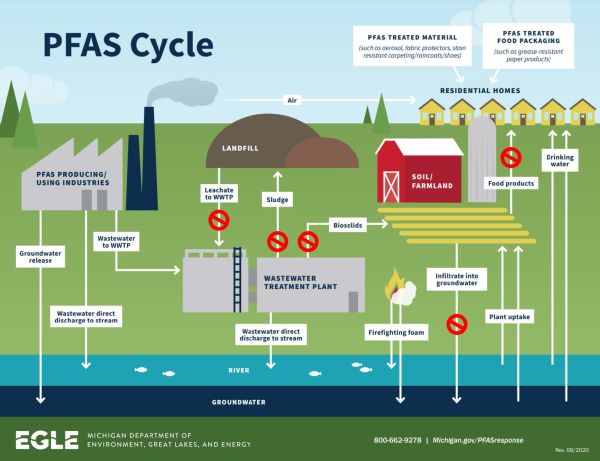
Saratoga Biochar’s technology uniquely remediates PFAS and other volatile organic compounds (VOCs) which cause odors. Saratoga Biochar materially reduces the spread of PFAS and other contaminants by remediating PFAS and VOCs from biosolids to ensure a clean Carbon Fertilizer product. Furthermore, Saratoga Biochar ensures the complete destruction of PFAS and other VOCs by combusting the pyrogas generated by pyrolysis, as well as wastewater, at 2,300⁰F. This ensures our air emissions and wastewater are clean.
There is extensive research on how PFAS (perfluoroalkyl substances) and other contaminants found in biosolids are remediated from the material within the operating temperature range employed by Saratoga Biochar. Claims that PFAS and other pollutants cannot be destroyed through controlled and tested thermal treatment processes are simply untrue. There is an abundance of scientific research that concludes PFAS is most volatile in a gaseous state (like most molecules). By first separating the PFAS and other contaminants from the solids using pyrolysis, PFAS and other contaminants can then be successfully treated in a thermal oxidizer. Saratoga Biochar has outlined this for the NYS DEC which is currently reviewing Saratoga Biochar’s permit applications for solid waste handling and air permits. Saratoga Biochar has also supplied material tests that confirm our ability to remediate PFAS from the Carbon Fertilizer™.
PFAS concentrations in biosolids material are minimal. Risk assessments by states (ME, NH, NY, VT, etc.) have determined that direct contact, inhalation, or ingestion of typical biosolids and other recycled residuals pose no significant health risk, including from the traces of PFAS they contain. Typical levels of PFAS in modern biosolids are ~20 times less than the most stringent direct contact standard for soils, which is 600 ppb for PFOA and 440 ppb for PFOS for industrial site use in NYS. Only in a few worst-case scenarios have wastewater and biosolids been implicated in PFAS water contamination at levels of concern (e.g., near or above 70 ppt in water). These rare cases are where there have been ongoing discharges to sewers from industrial facilities or fire-fighting foam waste materials manufactured with significant volumes of PFAS. In response to these rare situations, PFAS levels in wastewater and biosolids have been reduced efficiently by investigating industries discharging to the sewer system and stopping their discharges through industrial pretreatment requirements and other source controls.
Saratoga Biochar cannot and will not receive any fire-fighting foam, carpet, or other hazardous materials that contain large amounts of PFAS. The traces of PFAS in the incoming biosolids is literally the PFAS that has already passed through human beings or has been washed down kitchen sinks from cookware, fast food packaging, the coatings on paper plates and paper cups, etc.
Saratoga Biochar has taken every reasonable precaution to ensure PFAS and other harmful compounds will not be emitted from the Saratoga Biochar facility in its Carbon Fertilizer™ product, its atmospheric emissions, and its wastewater.
The potential for odors from the proposed Saratoga Biochar facility comes from the receiving and handling of biosolids and the biosolids drying (dehydration) process which is already commonly employed in metropolitan areas throughout the region and country.
Saratoga Biochar has opted for a far more robust air treatment system than anything currently employed in the U.S. in a biosolids drying operation. Its carefully designed biosolids receiving and containment area was modeled after a very successful biosolids drying facility in Zion, IL which was constructed amidst a dense suburban development, and which has never received an odor complaint. Saratoga Biochar’s entire building is designed to contain fugitive odors and even includes an indoor receiving area with 40’ clearance for trucks to unload inside a fully enclosed space.
Saratoga Biochar’s air treatment process further treats the emissions from the thermal oxidizer and dryer. High-efficiency dry cyclones remove most of the dust and recycle it back into the process. Wet venturi scrubbers remove the remaining fine particles which are returned to a publicly owned wastewater treatment plant. The hydrated lime scrubber removes sulfur dioxide (SO₂) and numerous odor compounds and discharges its wastewater to the public sewer. The ammonia scrubber removes ammonia (NH₄) and recycles the byproduct, ammonium sulfate, into the Carbon Fertilizer™ to recycle its nutrient value. Dual-stage bio-scrubbers further polish odors and remove SO₂.
Saratoga Biochar’s selected air treatment supplier, CondorChem Envitech, is one of the most prominent and successful air treatment manufacturers globally and will provide emission guarantees for sulfur dioxide (SO₂), ammonia (NH₄), particulates, and odors. PFAS and NOx emissions are managed in the pyrolysis process via thermal oxidation of the syngas generated by pyrolysis.
Other regulated air emissions from the facility, such as nitrous oxide (NOx), sulfur dioxide (SO₂) and particulates will not exceed the very restrictive NYS regulatory thresholds which are designed to protect human health and the environment. Furthermore, Saratoga Biochar is only installing one-third of its intended capacity in the first project phase, which ensures that its emissions will be materially below any regulatory threshold that would trigger a concern for human health or the environment. This phased approach allows Saratoga Biochar to validate all air emissions expectations prior to achieving anywhere near its full production capacity.
The NYS DEC has permitted a similar project in Schenectady, NY. Furthermore, the NYSDEC has specific sections of the solid waste regulations that address biosolids drying and pyrolysis.
- 6 NYCRR Part 361-3 has specific requirements for the management of biosolids.
- 6 NYCRR Part 362-1 has specific requirements for solid waste management facilities that employ pyrolysis for thermal treatment of waste materials.
The NYSDEC is in the process of evaluating Saratoga Biochar’s permit applications and has not yet issued permits nor determined any special conditions that may be required. Permit issuance will include compliance standards and reporting requirements. Saratoga Biochar and the Moreau Town Planning Board anticipate the NYS DEC to first provide a permit for a single production line (i.e., one-third of Saratoga Biochar’s proposed capacity), which would require modification as Saratoga Biochar’s second and then third production lines are added. This approach gives Saratoga Biochar and the NYS DEC the opportunity to verify emissions prior to proceeding with additional capacity. Saratoga Biochar fully anticipates repeating the testing procedures prior to installing the second and third production lines.
The Saratoga Biochar facility will utilize up to 30,079 gallons of municipal water per day and discharge 29,456 gallons per day to the Glens Falls treatment facility. This is not considered a large quantity of water for a manufacturing facility. Water is primarily consumed in the air treatment system and all wastewater is generated from the air treatment system.
The 1991 General Environmental Impact Statement (GEIS) that was prepared for the Moreau Industrial Park at the time of the park’s inception noted that the park’s proposed water and wastewater consumption quantities were 75,000 gallons per day. Moreover, the industrial park was created to support many such businesses, and it has been advertised to the applicant by the Town of Moreau and the Moreau Industrial Park LLC as having the utility infrastructure to support Saratoga Biochar’s as well as many other industrial/manufacturing zoned businesses. The capability of the Moreau Industrial Park, the Town of Moreau, and the City of Glens Falls’ water and wastewater delivery and treatment infrastructure to handle the water and wastewater associated with the Saratoga Biochar facility has been verified through the appropriate authorities with confirming evidence submitted the Town Planning Board itself. Moreover, while one business within the Industrial Park may have higher water/wastewater needs, other businesses may have far less. The 1991 Industrial Park GEIS contemplates the balance of resources across different types of potential industrial manufacturing or general commercial facilities. The Glens Falls wastewater treatment facility has also verified in writing that Saratoga Biochar’s wastewater stream is acceptable and can be fully supported by their process. The Town of Moreau is only using a fraction of its contracted sewerage line capacity with the Glens Falls treatment facility. The addition of Saratoga Biochar’s wastewater volume and content has been described as “beneficial” for the Glens Falls treatment facility.
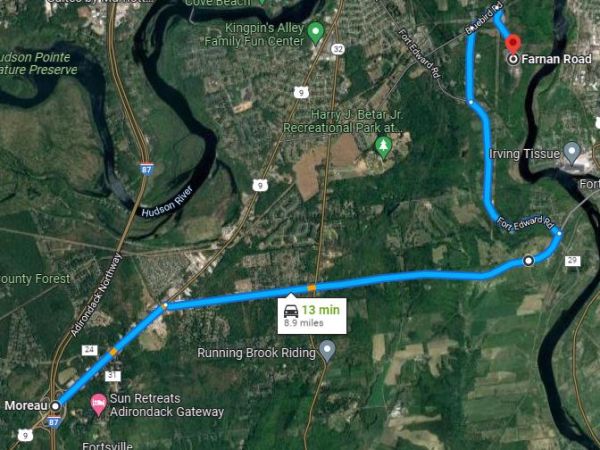
All trucks to and from the industrial park that transport feedstocks, other inputs, and finished product are required to follow the Town of Moreau’s established Industrial Park truck transportation route to and from I87 as follows:
- I87 Exit 17 to Route 9 North
- Route 197 (Reynolds Rd.) East
- Fort Edward Rd. North
- Bluebird Rd. East
- Farnan Rd. / Moreau Industrial Park
Truck traffic to and from the facility will be occur between the hours of 6:00 AM – 6:00 PM Monday – Saturday, not including Sundays or major holidays. Up to 50 trucks per day would travel to and from Saratoga Biochar once all three phases of the project are built and fully operational. In its first year of operation with only a single-phase operating, truck traffic will be average 20/day. 90% of truck traffic will be biosolids and waste wood delivery, arriving full and leaving empty. The remainder of truck traffic will be input deliveries, arriving full and leaving empty, and trucks transporting Carbon Fertilizer™ which arrive empty and leave loaded. The projected truck traffic to and from Saratoga Biochar is far LESS than the 1991 General Environmental Impact Statement screening threshold for the Moreau Industrial Park which, to date, has only one occupant and very little traffic.
Standard over-the-road dump trailers with heavy duty, tight-fitting tarps are used for transporting biosolids. Biosolids transportation is tightly regulated throughout the United States and especially in New York. No delivery trucks can be accepted that do not possess valid NY State DOT permits and contain biosolids that are regulated, tested, and recorded as originating from publicly owned and managed wastewater treatment facilities. Saratoga Biochar has contracted biosolids waste transportation with Casella Organics; an established hauler that manages over 450,000 tons per year of biosolids in the region.
The Saratoga Biochar facility is a thermal treatment facility that recycles biosolids and clean woody biomass materials into Carbon Fertilizer™; a revolutionary bio-fertilizer designed to sequester carbon and rejuvenate soils. The facility, when fully constructed, will annually recycle approximately 225,000 tons of biosolids and 23,000 tons of wood biomass into 25,000 tons of clean, dry, pelletized Carbon Fertilizer™. Biosolids and clean wood waste are the “raw materials” used in the production of Carbon Fertilizer™. The pyrolysis process employed is uniquely environmental as it:
- Destroys PFAS, VOCs, microplastics, pathogens, and other contaminants in biosolids.
- Avoids spreading PFAS and other contaminants by diverting biosolids from current methods.
- Achieves lowest emissions of any biosolids disposal method that remediates PFAS.
- Reduces GHG emissions from biosolids disposal and chemical fertilizer manufacturing.
- Sequesters beneficial carbon in soil where it is needed.
Saratoga Biochar’s facility offers the most sustainable use of biosolids to the benefit of human health and the environment and is the best option for publicly owned treatment plants to dispose of biosolids. Biosolids disposal options in New York are dwindling as generation increases with population.
- Landfills are filling up and new landfills are increasingly difficult to construct.
- Incinerators are shutting down due to very high costs and high emissions.
- Land application of biosolids is dangerous and becoming prohibited in more states and counties.
- Composting biosolids is difficult to site, has limited demand and does not remediate contaminants.
Saratoga Biochar’s facility, once fully completed, will receive approximately 15% of biosolids generated in New York. The facility is expected to make a material reduction in the spread of PFAS and other contaminants by diverting biosolids from current biosolids disposal practices.
Saratoga Biochar will:
- Create twenty (20) full time jobs with competitive pay and health benefits.
- Provide the Town with free disposal of wood waste generated by the municipality.
- Provide the Town with free Carbon Fertilizer in adequate supply for use on municipal properties.
- Indirectly reduce the Town’s biosolids disposal cost through the Towns partner sewage treatment facility (currently Glens Falls).
- Add to the Town’s tax base.
- Attract other business to the Town through construction and ongoing facility operations.
- Increase tourism to Moreau as industry experts and waste management authorities will be interested in visiting Saratoga Biochar Solutions.
Pyrolysis is a low-temperature thermal treatment process that separates VOCs, organic compounds, and contaminants from the solids, and then thermally oxidizes the pyrogas generated by pyrolysis to remediate PFAS and VOCs from the air emissions and wastewater.
Alternatively, incineration is a process whereby the solids are burned directly which generates higher regulated air emissions and GHG emissions. Incinerators are currently closing down due to their high impact on regulated air emissions and GHG emissions.
The primary difference can be easily understood by examining the byproduct of each method. Incineration produces a relatively small amount of fly ash that must be landfilled. Pyrolysis produces a relatively large amount of Carbon Fertilizer™ that is composed of “avoided emissions” that incinerators release into the atmosphere. The Carbon Fertilizer™ is PFAS-free and has numerous beneficial uses.
Pyrolysis is a form of thermal decomposition that separates PFAS, VOCs, and contaminants in an oxygen starved environment from the solids without burning the solids. Avoiding the direct combustion of solids in the process provides a uniquely low-emission solution that out-performs all other biosolids disposal solutions from a regulated air emission and GHG emission perspective. PFAS, VOCs, and other contaminants are converted to a gaseous state and then remediated through thermal oxidation which employs a staged combustion process that minimizes nitrous oxide (NOx) formation.
Saratoga Biochar has tested the technology multiple times in manufacturer-provided pilot systems with great success. Gas and Carbon Fertilizer™ output has also been 3rd party, independent laboratory tested, also with great success. All equipment used in the facility has been used across multiple industrial applications for many decades. Saratoga Biochar has developed a unique application of simple, tried and true technology to solve a modern waste problem. Process performance and emissions guarantees are provided by our manufacturer which has over 140 years of experience designing and manufacturing thermal treatment systems.
Biosolids are not classified by any federal or state regulatory agency as toxic or hazardous. The US EPA states: “The presence of a pollutant in biosolids alone does not mean that the biosolids pose harm to human health and the environment.” That said, it is widely known and understood that biosolids often contain low levels of known or suspected compounds that could be harmful, which is why Saratoga Biochar has designed its process to use pyrolysis and thermal oxidation to remediate such materials and is investing in a benchmark air treatment system to handle odors and regulated air emissions.
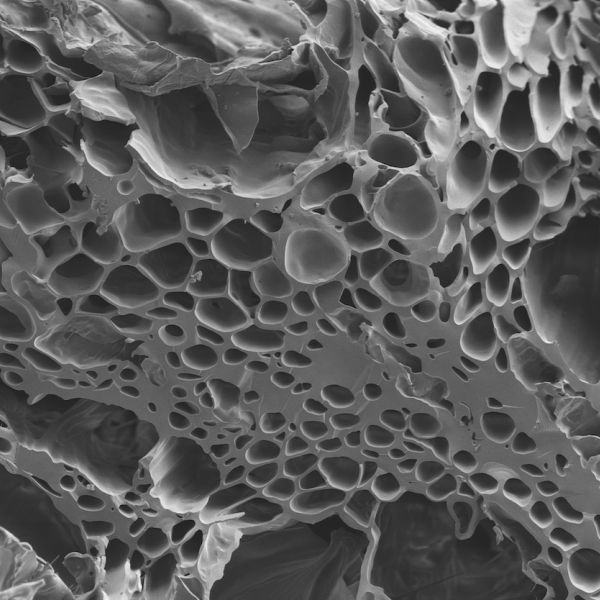
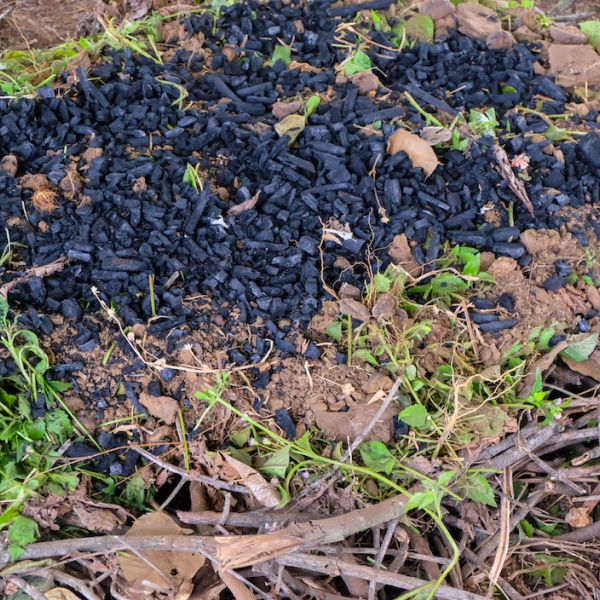
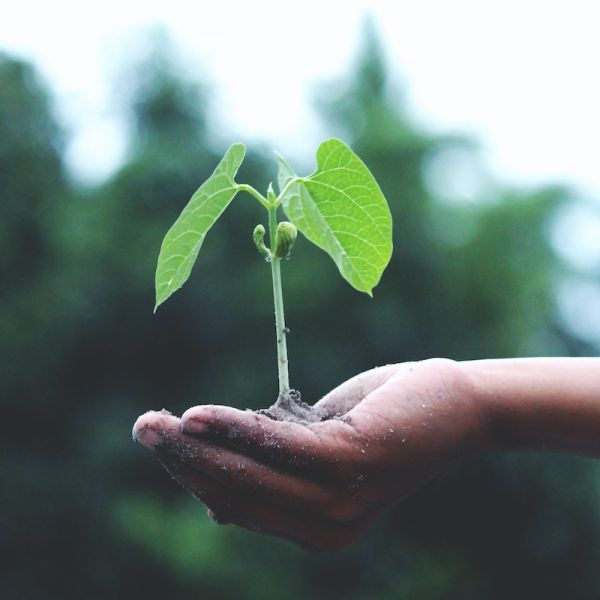
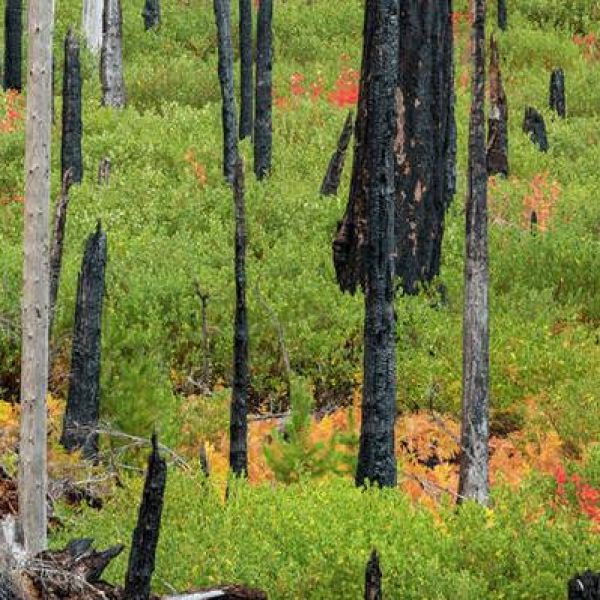
Fact vs. Fiction
-
Fact: Saratoga Biochar proposes to build a Carbon Fertilizer™ manufacturing facility that employs pyrolysis with state of the art air quality controls to recover solids instead of burning them like an incinerator.
-
Fiction: Saratoga Biochar has proposed to build an incinerator that would “burn poop.”
-
Fact: Biosolids are currently transported through Moreau in permitted, tarped, and sealed trucks that contain the odors. Biosolids deliveries are received indoors, and processing is performed indoors, under the purview of a benchmark air treatment system to avoid any fugitive odors.
-
Fiction: Transporting, receiving, and processing biosolids will make Moreau smell.
-
Fact: Saratoga Biochar’s process uniquely destroys PFAS, VOCs, pathogens, microplastics, and numerous other trace contaminants which are thermally removed from the solids and thermally oxidized in gaseous form to fully remediate PFAS and other contaminants.
-
Fiction: Saratoga Biochar will burn biosolids and release PFAS and other potentially harmful compounds into Moreau’s air, water and soil from its plant emissions and fertilizer product.
-
Fact: Saratoga Biochar’s process and air treatment system reduces nitrous oxides (NOx), sulfur dioxide (SO₂), ammonia (NH₃), particulates and odors.
-
Fiction: Saratoga Biochar will create a pollution problem and put human health at risk.
-
Fact: Saratoga Biochar’s Carbon Fertilizer™ materially exceeds EPA standards for an excellent quality class A biosolids product. Furthermore, Saratoga Biochar removes PFAS and other contaminants commonly found in biosolids to ensure our product is the safest on the market now, and in the future.
-
Fiction: Saratoga Biochar’s fertilizer product will contain dangerous toxins.
-
Fact: Saratoga Biochar’s process destroys PFAS and contaminants in biosolids whereas current biosolids disposal solutions do not.
-
Fiction: Biosolids landfilling, land application, composting and incinerating is safer and cost less.
-
Fact: Biosolids are not hazardous. Biosolids are “dewatered” solids, not liquid. For safety, trucks that deliver biosolids to the Moreau Industrial Park will obey all local and state traffic laws, signs and signals. If a spill were to occur anywhere along the pre-approved, existing industrial park truck route, nearby resources will deploy immediately to clean up and remove the material and repair any damaged property.
-
Fiction: Trucks delivering biosolids to the Moreau Industrial Park could turnover in an accident, spilling liquid hazardous material in a residential area.
-
Facts: The truck route for the Moreau Industrial Park was already pre-established and approved over twenty years ago. That process undertook a third party, professional truck and traffic engineering study which deemed the route practical and safe. The route was deemed capable of safely routing hundreds of trucks per day to and from the industrial park. The route travels by approximately 240 businesses and private residences. The current daily traffic averages for the route are –
- Bluebird Rd.: 3,773 vehicles per day
- Ft Edward Rd.: 3,406 vehicles per day
- Reynolds Rd: 8,589 vehicles per day
- Rt 9: 20,410 vehicles per day
-
Fiction: The truck route from I87 to the Moreau Industrial Park travels winding roads through a densely populated residential area.
-
Fact: Saratoga Biochar is a small, startup, “main street USA” company with owners from Saratoga County and the Glens Falls area. Saratoga Biochar seeks to remediate a waste problem and simultaneously create a clean and safe fertilizer product that is 100% recycled and MADE IN THE USA by locally hired and fully trained employees. Saratoga Biochar cares deeply about the health and safety of its neighbors and the local, regional, and global environment.
-
Fiction: Saratoga Biochar is a large corporation that does not care about the environment of Moreau or the health and safety of its residents.
-
Fact: Biosolids are not hazardous. Saratoga Biochar’s dual receiving pits are designed to strictly contain solids and any liquids from escaping, and to repel ground water from intruding. The groundwater table below the facility location is 10-12 feet below grade. The pits will be constructed for high integrity with thick, sealed concrete walls and are scheduled to be cleared once per year for integrity inspection and report by third-party professional engineer. The receiving pits will be installed below grade and fully enclosed. The dump opening to each pit will be kept covered by a steel trap door except during dumping. Each pit will also be covered by a grate with 8” openings for safety, only to be removed for pit and conveyance system maintenance. The pits will be kept under constant negative air pressure with all exhaust air routed through the facility’s multi-stage air emissions cleaning system. The pits are designed to provide the needed capacity for safe, temporary storage of biosolids. The pits will be equipped with 4x redundant, open, centerless screw type conveyors that constantly pull material into the closed processing system.
-
Fiction: Biosolids received at the facility are hazardous and may contaminate ground water if the storage pits leak.
-
Fact: Biosolids deliveries to the facility will be carefully scheduled and staggered such that trucks are on the move and never idle or parked for long at the facility entrance or on facility property. Saratoga Biochar is required to turn away biosolids deliveries if unable to accept them. The facility’s dual receiving pits allow for two trucks to enter and dump simultaneously. The facility’s driveway and parking layout with automated weigh station is designed to allow for safe, smooth truck traffic flow with extra space and wide turn radiuses.
-
Fiction: Biosolids delivery trucks could be parked in front of the biochar facility or the industrial park or anywhere along the truck route waiting, causing odor and traffic problems.